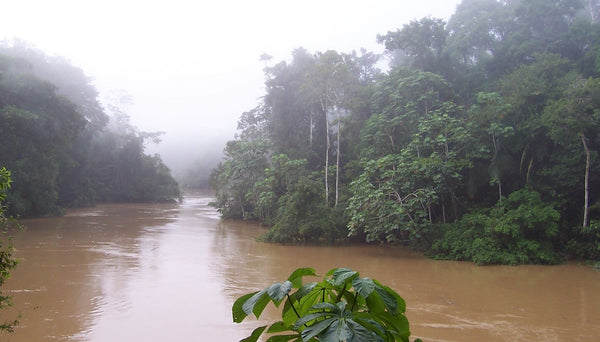- Continue Shopping
- Your Cart is Empty
Rainy days and Sundays... A chance to evolve...
"Seems it never rains in southern California
Seems I've often heard that kind of talk before
It never rains in California, but girl, don't they warn ya?
It pours, man, it pours"- from the song, "It Never Rains in Southern California, by Albert Hammond, 1972
Okay, yeah, here in L.A., we've just come off what was probably the rainiest couple of days in decades. And of course, LA is totally unprepared for rain. We scurry around like ants at a picnic, not sure exactly what to do, what to wear..where to go. It's funny to the rest of the world; even funnier to us, except when there is damage.

And of course, as a fish geek, after dealing with this deluge, it got me thinking about the seasonal inundation that tropical areas, such as The Amazon region, and how the seasonal rains affect the aquatic habitats there.
What happens in many of the regions of Amazonia is that the water levels in the rivers rise significantly. often several meters, and the once dry forest floor fills with water from the torrential rain and overflowing rivers and streams. The Igapos are formed.
All of the botanical material- fallen leaves, sed pods, and such, is suddenly submerged; often, currents re-distribute this material into little pockets and "stands", affecting the now underwater "geography" of the landscape. Leaves begin to accumulate. Soils dissolve their chemical constituents, tannins, and humic acids into the water, enriching it. Fungi and micororganisms begin to feed on and break down the materials. Biolfilsm form, crustaceans multiply rapidly. Fishes are able to find new food sources; new hiding places..new areas to spawn.

Life flourishes in these inundated forest floors.
What's really cool to me is that this is a regular cycle of life, and that we as aquarists are in a unique place to replicate some aspects of this unique ecosystem.

Huh?
What about running a system like a palludarium for part of the year, with the aquarium partially filled with water, and a stand of terrestrial or marginal plans on an "island" of rock or soil (perhaps using planters)?

Then, you'd increase the water level over a period of several days, simulating this inundation. You would add a lot more and different leaves and botanicals to simulate the influx of materials swept into the streams during the rainy season.
You could turn up the filter output ever so slightly, or add small powerheads (perhaps) to simulate the increased water movement caused by the rising water levels.
Yeah, the plant might take a beating, the "aquascape" would be in a bit of chaos, with soil and other material strewn about the tank and redistributing...Just like in nature, right?

You could add some additional fishes, to simulate the "castaways" or "travelers" which flow into these inundated areas...

You'd probably see some water chemistry changes (perhaps a shift towards a more acidic pH). You'd definitely see an increase in the turbidity of the water...for a while.

And an increase in the biofilms and possibly some crustacean life forms (Oh..what if you added a bunch of Daphnia or Gammarus at the same time? Cool!)

A reasonable simulation of a remarkable cycle that occurs in nature on a regular basis. Disruptive? Perhaps. Beneficial? To the fishes, certainly- after they adjust. Transformational? Definitely.

It's something that would perhaps unlock some interesting insights into the lives of our fishes and the environments from which they come. It would be unusual, aesthetically fascinating, utterly compelling, and absolutely out of step with commonly "accepted" aquarium practice.
Rain is truly the bearer of life. It's transformational, essential for our existence...and for the continued existence of many of the fishes we love, as well as the habitats from which they come.
It can be an inconvenience, as in the case of our storm here in L.A.

or it can be an opportunity to discover the amazing cycle of life which occurs when the rain return, evolving the ecosystem as only nature can.

Until now, right?
You've got this. Try it. Learn. Share. Repeat.
Stay bold. Stay creative...
And Stay Wet.
Scott Fellman
Tannin Aquaitcs











Scott Fellman
Author